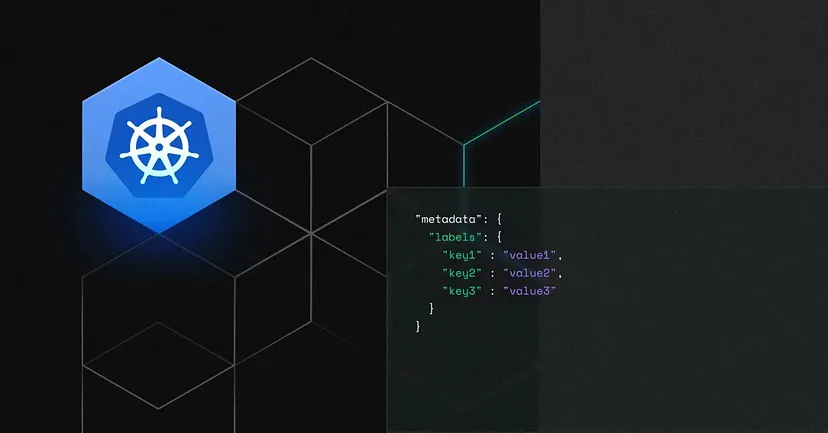Navigating Kubernetes with Labels, Selectors, and Node Selectors☸️🚀
 Saurabh Adhau
Saurabh Adhau
Kubernetes, often dubbed K8s, is a revolutionary platform for container orchestration, offering a dynamic environment for deploying and managing containerized applications. 🐳 Two indispensable tools in the Kubernetes arsenal are Labels, Selectors, and Node Selectors. In this comprehensive guide, we will explore these fundamental concepts with the aid of real-world industry examples and hands-on YAML files, showcasing how they can be harnessed to optimize your resource management. 🛠️
Section 1: The Foundation — Labels in Kubernetes 🏷️
1.1 Labels Unveiled
At the heart of Kubernetes, labels are the unsung heroes. Labels are key-value pairs used as metadata for resources like pods, services, and nodes. They provide a flexible means of categorizing and organizing resources. 🏷️
Industry Example — Managing Microservices with Labels:
Imagine overseeing a complex microservices application. Each microservice corresponds to a different pod, and you need an efficient way to identify, group, and manage them. 🏭
Create Pods with Labels 📄
apiVersion: v1
kind: Pod
metadata:
name: microservice-pod-1
labels:
app: service-a
env: production
spec:
containers:
- name: service-container
image: service-a-image:latest
apiVersion: v1
kind: Pod
metadata:
name: microservice-pod-2
labels:
app: service-b
env: development
spec:
containers:
- name: service-container
image: service-b-image:latest
1.2 Labels Selectors
The true magic of labels is revealed when you implement Label Selectors. These selectors are expressions that filter resources based on their labels, enabling precise control over resource management. 🎩
Industry Example — Service Discovery with Labels Selectors:
To dynamically discover and balance traffic across your microservices, you can employ Label Selectors in your service definitions. 🚀
Create a Service with Label Selectors 📄
apiVersion: v1
kind: Service
metadata:
name: microservice-service
spec:
selector:
app: service-a
ports:
- protocol: TCP
port: 80
targetPort: 8080
This service, through its Label Selector, ensures that incoming traffic is routed to pods with the label app: service-a, promoting balanced load distribution. 🔄
Section 2: Node Selectors for Precise Resource Allocation 🏢
2.1 Introducing Node Selectors 🖥️
Node Selectors offer granular control over pod placement on specific nodes within your cluster. They prove invaluable when your nodes possess varying hardware characteristics. 🤖
Industry Example — Smart GPU Allocation for Machine Learning:
Consider a scenario in which your Kubernetes cluster comprises both standard nodes and GPU-equipped nodes. You need to ensure that machine learning workloads are scheduled on GPU nodes while standard workloads are assigned to regular nodes.
Create a Node with a Label 📄
apiVersion: v1
kind: Node
metadata:
name: gpu-node
labels:
gpu: true
Create a Pod with a Node Selector 📄
apiVersion: v1
kind: Pod
metadata:
name: ml-pod-1
spec:
containers:
- name: ml-container
image: ml-app:latest
nodeSelector:
gpu: true
By labeling nodes with GPU capabilities and specifying a Node Selector in your pod, you ensure that your resource-intensive machine learning workloads are allocated to nodes with GPUs, optimizing resource utilization. 📈
Section 3: Best Practices and Considerations 📋
3.1 Naming Conventions for Labels and Node Selectors 🗂️
Maintaining consistent naming conventions for labels and Node Selectors is vital for the organization of your Kubernetes cluster. 📦
3.2 Striking the Right Balance ⚖️
While Labels, Selectors, and Node Selectors offer immense flexibility, it’s imperative to keep configurations clear and concise. Overcomplicated setups can lead to confusion and inefficiency. 🤔
3.3 Continuous Monitoring and Auditing 🔄
Regularly auditing your labels, Selectors, and resource allocations ensures they align with your desired cluster state, reinforcing robust resource management. 🕵️♂️
Conclusion 🌟
Kubernetes empowers you to manage containerized applications with unprecedented efficiency. Labels, Selectors, and Node Selectors are your secret weapons for fine-tuned resource allocation. With real-world scenarios and best practices, this guide has shown how these tools can be applied effectively in your Kubernetes deployments.
As you continue your Kubernetes journey, remember that labels, Selectors, and Node Selectors are your companions in crafting robust, scalable, and efficient containerized solutions ready to conquer the challenges of today and tomorrow. 🚢
Subscribe to my newsletter
Read articles from Saurabh Adhau directly inside your inbox. Subscribe to the newsletter, and don't miss out.
Written by

Saurabh Adhau
Saurabh Adhau
As a DevOps Engineer, I thrive in the cloud and command a vast arsenal of tools and technologies: ☁️ AWS and Azure Cloud: Where the sky is the limit, I ensure applications soar. 🔨 DevOps Toolbelt: Git, GitHub, GitLab – I master them all for smooth development workflows. 🧱 Infrastructure as Code: Terraform and Ansible sculpt infrastructure like a masterpiece. 🐳 Containerization: With Docker, I package applications for effortless deployment. 🚀 Orchestration: Kubernetes conducts my application symphonies. 🌐 Web Servers: Nginx and Apache, my trusted gatekeepers of the web.